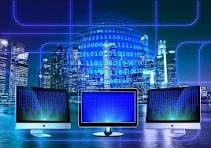
The Fundamentals of IT (Information Technology) and Computing cover the essential concepts, tools, and technologies that form the basis of modern computing and IT systems. Here's a breakdown of the key components:
1. Basics of IT
- Definition: IT refers to the use of computers, storage, networking, and other physical devices to manage, store, and process data.
- Key Areas:
- Hardware: Physical components like CPU, RAM, storage devices, input/output devices.
- Software: System software (Operating Systems), application software, and utility programs.
- Networks: Connecting systems through LAN, WAN, internet.
- Data: Data collection, storage, processing, and management.
2. Computing Fundamentals
- History of Computing:
- Early devices: Abacus, Pascaline.
- Generations of computers: Vacuum tubes to AI-driven systems.
- Types of Computers:
- Personal Computers (PCs), Mainframes, Supercomputers, Mobile Devices.
- Components of a Computer System:
- Input Devices: Keyboard, mouse, scanner.
- Output Devices: Monitor, printer, speakers.
- Storage: HDDs, SSDs, cloud storage.
- Processing Unit: Central Processing Unit (CPU) and Graphics Processing Unit (GPU).
3. Networking
- Concepts:
- IP Addresses, Domain Names, and DNS.
- Protocols: HTTP, FTP, TCP/IP.
- Types of Networks:
- Local Area Network (LAN), Wide Area Network (WAN), Virtual Private Network (VPN).
- Internet and Intranet:
- Internet: Public, global network.
- Intranet: Private network for organizations.
4. Programming Basics
- Languages: Python, Java, C++, JavaScript, etc.
- Programming Paradigms: Procedural, Object-Oriented, Functional.
- Algorithms and Logic: Steps to solve problems computationally.
- Application Development: Web, Mobile, and Desktop applications.
5. Data and Databases
- Data Types: Structured, Unstructured, Semi-structured.
- Database Management Systems (DBMS):
- SQL-based: MySQL, PostgreSQL.
- NoSQL-based: MongoDB, Cassandra.
- Data Analytics: Using tools like Excel, Power BI, Python libraries.
6. Cybersecurity
- Threats: Malware, Phishing, Ransomware.
- Protection Measures: Firewalls, Antivirus, Encryption.
- Best Practices:
- Regular updates.
- Secure passwords and two-factor authentication.
7. Emerging Technologies in IT
- Cloud Computing: AWS, Azure, Google Cloud.
- Artificial Intelligence & Machine Learning.
- Blockchain Technology.
- Internet of Things (IoT).
- 5G Networks.
8. Practical Applications
- Office Tools: Word processors, spreadsheets, presentation software.
- Web Technologies: HTML, CSS, JavaScript, web hosting.
- Project Management: Tools like Trello, Asana, and MS Project.
This foundational knowledge is crucial for anyone pursuing a career in IT or wanting to understand how computing integrates into various industries and daily life.
- Teacher: STJS Course